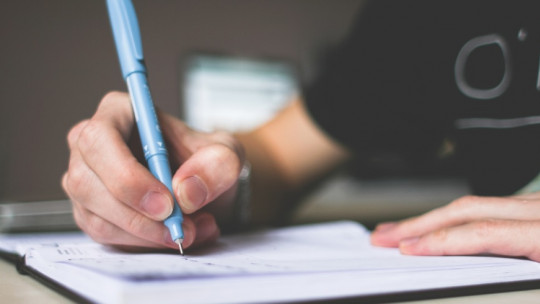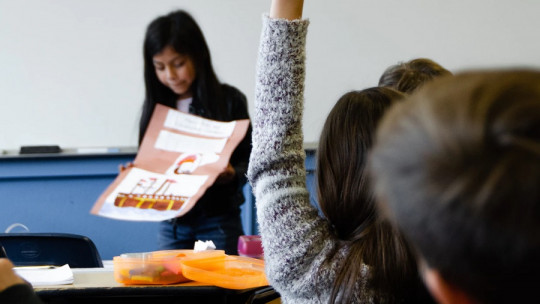Evaluation is an essential aspect in any educational process, since it is through it that students’ progress and areas to improve are identified.
Traditionally, a written exam or a rubric was chosen, although over time more evaluation techniques have been incorporated into the educational sector.
Next We will see the different educational evaluation instruments, their characteristics and some examples
What are educational evaluation instruments?
We understand educational evaluation instruments to be any technique that serves to evaluate the teaching process, the quality of students’ learning and their performance. Thus, it is possible to identify aspects that need to be improved specifically in students, analyze the causes of learning not achieved and make decisions at the appropriate time.
Formative evaluation focuses on the collection, systematization and analysis of information obtained from various sources, with the aim of improving student learning and teaching intervention. Evaluation cannot depend on a single technique or instrument because in this way only a single type of knowledge, skill, attitude or value would be evaluated in a disintegrated manner.
Below we will see a set of educational evaluation instruments, both observational and more standardized and written, that can be useful in the educational field.
Observation evaluation techniques
Within the educational evaluation instruments, we have some that are part of the observation techniques. These techniques allow the evaluation of learning processes at the moment they occur. In this way, teachers can see what knowledge, skills, attitudes and values the students have, and how they use them in a given situation.
1. Observation guide
The observation guide consists of an instrument that is based on a list of indicators, which can be written as statements or questions, and allowing the teacher to guide his observation work in the classroom It is used to observe the students’ responses in a certain activity, how they behave among themselves, what questions they ask about a certain topic…
2. Anecdotal record
The anecdotal record is a report that describes specific facts or situations that are considered important for the student or the class, giving an account of their behaviors, attitudes, interests or procedures. To be useful in the evaluation, it is necessary for the observer to record significant events of one or more students.
3. Attitude scale
The aptitude scale is about a list of statements or phrases selected to measure the student’s personal attitude, both positive, negative and neutral in front of other people, objects or situations.
Written evaluation techniques
Written evaluation techniques are a fairly extensive set of educational evaluation instruments. It refers to tests that are answered directly by the student, and that the teacher has to infer whether the desired knowledge or behaviors have been acquired.
1. Class notebook
The class notebook is a truly useful information collection instrument, especially for continuous evaluation. The student writes in the notebook everything he has done, either daily or weekly. Thus, with this tool we can check aspects such as:
Before analyzing the class notebook, It is necessary to establish criteria that facilitate the assessment of any of these aspects preventing any of them, by themselves, from completely or mostly determining the evaluation itself.
Furthermore, from the outset the students should be notified of what aspects will be taken into account when analyzing the notebook and, once the evaluation is carried out, The moment will be taken advantage of to indicate what is going well and what needs to be improved
2. Exams
Exams, both in their traditional written and oral versions, are those tests that serve to evaluate what the students have studied, presenting them with a series of questions or tasks to solve.
Based on the resolution of these tasks or the answers given by the student the knowledge or lack of knowledge of the contents or the presence or absence of the behaviors in the students is inferred
Among the characteristics of the exams we have:
It is very important to understand that, although useful, these tests They should not be the only ones in the teaching evaluation process They are means to analyze and evaluate other aspects of students’ work.
It is important to treat errors or errors in tests from an investigative perspective rather than a sanctioning perspective If the student has not understood a certain concept, perhaps she requires some type of support after taking the test, in order for her to complete the learning.
It must be understood that both the correct and incorrect answers provide the teachers with valuable information to guide their classes, and the students to correct and overcome these deficiencies.
3. Questionnaires
Questionnaires, in the field of teaching, are exams in test format. They serve to evaluate prior knowledge about a teaching unit determined, posing the items in a highly standard format and the response being unique. Since the student does not have to write, but rather answers some items affirmatively or negatively, it is easy for the teacher to correct these tests.
4. Concept maps
Concept maps are instruments to highlight the main ideas of a certain content. They help both teachers and students easily identify and grasp the fundamentals of the teaching unit taught.
5. Information collection sheets
These worksheets are simple but very useful, both for the student and the teacher. In the case of the student, it serves to systematize the collection of information on small research projects. For the teacher it serves as a guide to evaluate other instruments.
6. Monographic works and small investigations
The monographic works and small investigations are works, with free themes, that allow students to expand their knowledge on their own. In this way, the student is a participant in the process of acquiring new knowledge.
This tool is especially useful for the teacher since it allows you to understand if the student has developed attitudes related to rigor, a taste for order, knows how to organize information and present it in an attractive way…
- Lynch, J. (1977). Continuing Education and the Preparation of Teaching Personnel. United Kingdom: UNESCO Institute for Education, Hamburg.
- Miklos T. and Tello M. (1999). Prospective Planning. A strategy for the design of the future. Mexico: Limusa
- Saad, E. and Pacheco, D. (1982). Teacher Training Texts. In “Training and continuing education of civil engineers in the public sector.” Vázquez FG, editor. Mexico: Institute of Social and Educational Research AC
- Zabalza-Beraza, MA, Montero-Mesa, ML and Cebreiro-López, B. (coord.) (1995). Contents presented at the: International Symposium on School Practices. Editors: University of Santiago.









